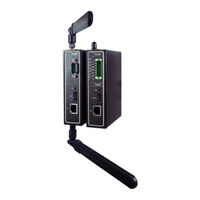Atop PG5901B Series Manuals
Manuals and User Guides for Atop PG5901B Series. We have 3 Atop PG5901B Series manuals available for free PDF download: Configuration Manual, User Manual
Advertisement
Atop PG5901B Series Configuration Manual (66 pages)
Protocol Gateway DNP3.0 Client/Server
Table of Contents
Advertisement
Advertisement


